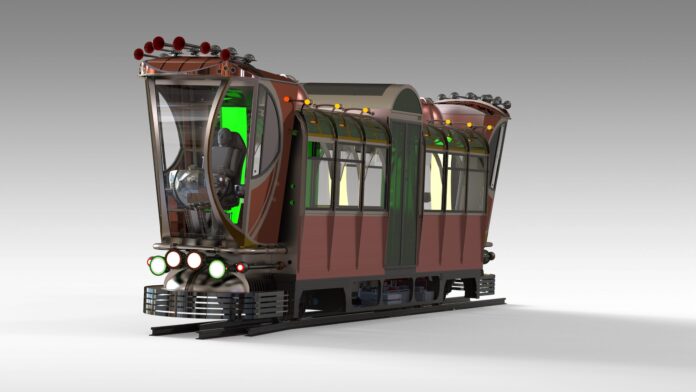An ambitious plan to build and operate a passenger tram in Nambour is gaining momentum.
The Nambour Tramway Company is pressing ahead with the proposal, which could help revitalise the hinterland town.
Proponents hope it will be given the green light by the national rail safety regulator next year.
The tram would run on heritage-listed tramway lines, which were in use for more than 100 years before the Moreton Sugar Mill closed in 2003.
NTC chairman Greg Rogerson, a former Sunshine Coast councillor, said the plan would become reality.
“It’s definite; we can see the light at the end of the tunnel,” he said of the 12-year project.
“All the infrastructure is in place, with a terminus and a railway line through town.”
The three-bay tramway depot was opened in 2021 and homes an ex-cane diesel locomotive, gifted by Bundaberg Sugar.
But Mr Rogerson can’t wait to see a functioning tram based there, drawing on the region’s past to invigorate its future.
“People remember Nambour as the quaint little town that used to have the sugar cane locos running through the main street, especially when the highway went through the centre of town,” he said.
“(But) if you walk along the main street now, you would see that every second shop window has a vacant sign on it.
“Nambour is doing it tough.”
Mr Rogerson said the rapid development of Maroochydore and its surrounds during recent decades led most businesses and residents to converge on the coastal suburbs.
“So, Nambour fell flat,” he said.
“The tram is not a silver bullet to get things going again but it’s something – a point of difference to help give Nambour a new lease of life.”
The NTC was formed to make it happen.
Mr Rogerson said the group of eight unpaid directors “don’t have a skerrick of tram or train in them”.
“But they love Nambour and want to do the best thing for the town,” he said.
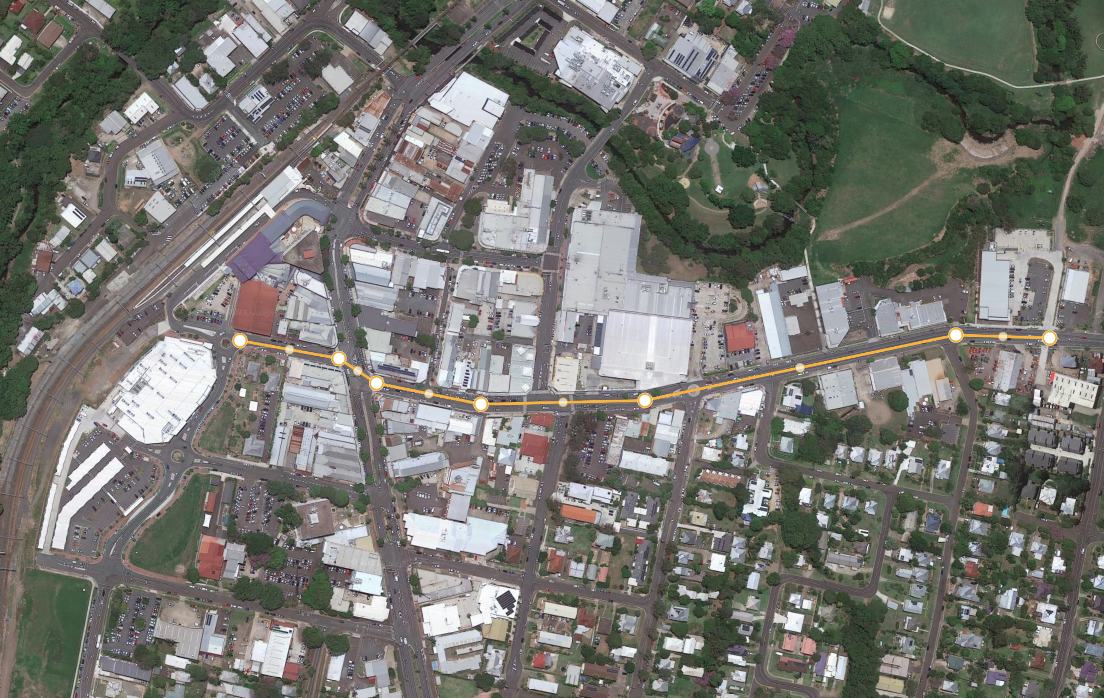
Where the tram could run
The 26-seat tram would initially run back and forth along an 800m section of track, from the terminus on Mill Street, through the Currie Street intersection and along Howard Street to the Aldi supermarket.
With further funding, they hoped to bring Stage 2 to life, extending the line about 800m to the north, past the Nambour State College agricultural farm to the Nambour Showgrounds.
“The terminus is only 50m from Nambour Train Station, so people would be able to travel via heavy rail to Nambour for big events like the Queensland Garden Expo and the Caravan and Outdoor Expo, and they would then be able to get on the tram and get to the showgrounds,” Mr Rogerson said.
“Once we get it up and running and everybody is blown away by what we have, we hope levels of government will get on board for Stage 2,” he said.
He envisaged the tram would run every half hour.
“Students will be able to ride free,” he said.
“So, parents won’t have to drive through town. The kids can walk to the tram or be dropped there, and it will take them to the school yard.”
It’s expected there would be a small fee, possibly $4, for other passengers. Special deals, like year passes, could be on offer for locals.
The tram, terminus and a likely information centre would be run mostly by volunteers, while one person would be paid (essentially from the gate takings) for day-to-day operations and to ensure the tram is adhering to safety requirements.

The creation of the tram
NTC’s journey to bring a tram to town has been a long one – in pursuit of funding, a builder, engineers and parts, while complying with the Office of the National Rail Safety Regulator.
“You have to crawl before you walk,” Mr Rogerson said.
“If the project wasn’t being held by ONRSR every step of the way, we could have it (the tram) built within 12 months, but we have to abide by the accreditation and standards and it’s very onerous.”
After realising the old loco was unsuitable, NTC opted to work towards a double-ended tram, which could take passengers back and forth on the single line, with a budget of about $600,000.
“We went all over Australia to see if we could get someone to build us a tram,” he said.
“But we couldn’t get anyone to do it (affordably), so we put a tender out worldwide and got three submissions back, from America, the UK and China.”
He said the first two were multimillion-dollar proposals while the one from China was for a $450,000 build.
“So, I took a trip over and paid my own way, and had a look (at the plans),” Mr Rogerson said.
“I saw the standard of materials, workmanship and transparency and was blown away. They were very friendly, and we were ready to sign a contract with them.
“But then I got a phone call out of the blue, from someone who said he had a mate who reckoned he could build us a tram.
“I rang him up, thinking I’d give him 15 minutes and we’d part ways, but after an hour he convinced me that he had the goods for the tram.”
Artist, designer and maker Russell Anderson, from Witta in the Sunshine Coast hinterland, was invited to speak to the NTC members.
He impressed and was given a small sum to do a proposal.
“And we were blown away by it, because it was completely different to what we had thought, clad in copper, with a cane harvester on front and back,” Mr Rogerson said.
“So, we started on the road to build the tram.”
They sourced engineering support and rail and rolling stock engineering experience via Covey Associates and ADA Engineering, and construction started.
“The bogies (that form the tram framework) are now being checked and when that comes back to us, we can start ordering the steel from BHP and getting it laser cut and sent to a (machines solutions) firm (Bradken) in Innisfail.
“We’re aiming for a commission date of January, but we could be out by a few months.”
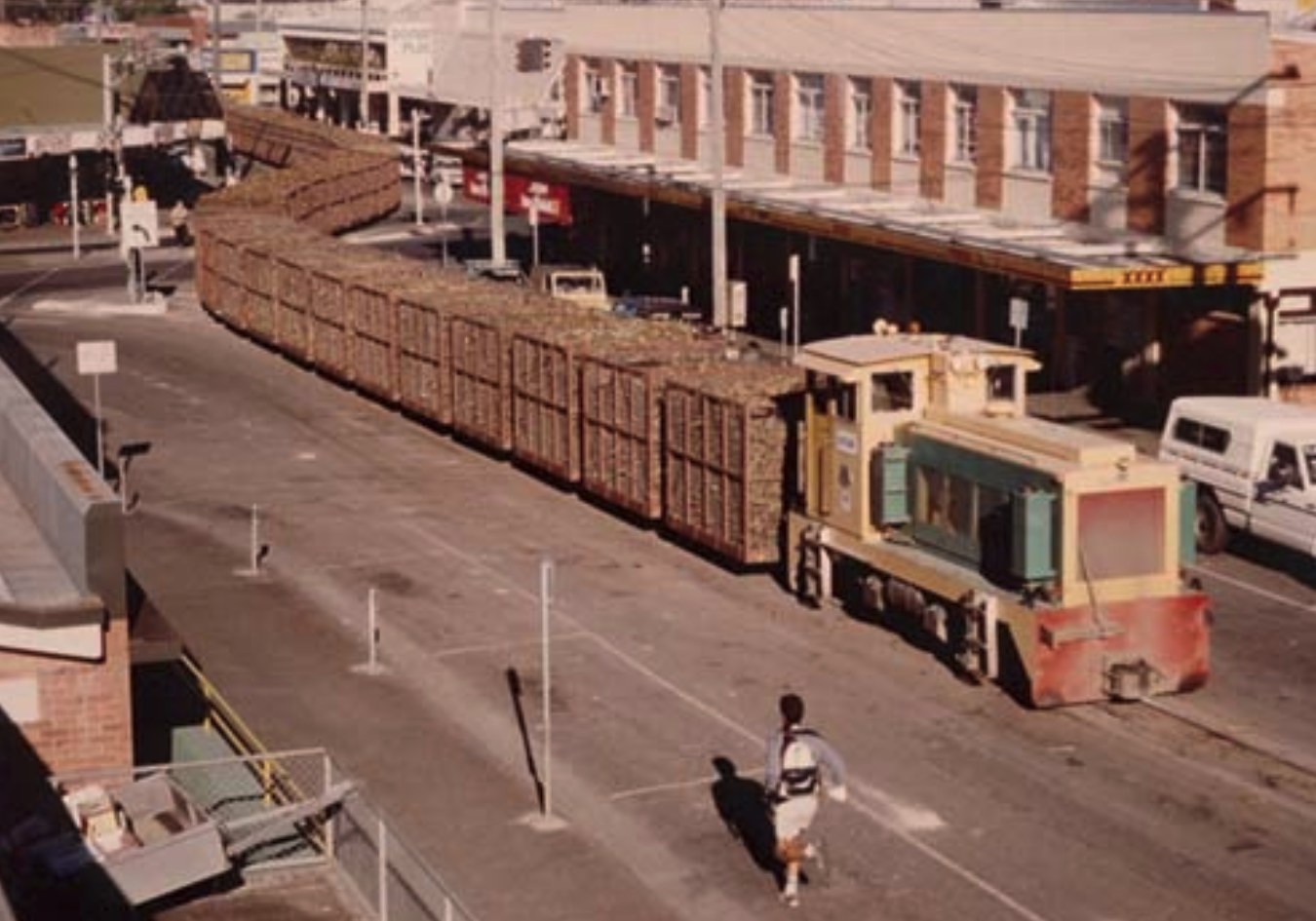
He said the motors were purchased via a firm in Newcastle.
“So, everything we have has come through Australia,” Mr Rogerson said.
“For something that was going to be built in China to have what we have now is incredible.”
The exception was the transmission, which is set to be supplied by German automation company SEW.
The tram is likely to be powered by a supercapacitor – an expensive energy storage device, similar to a battery.
“We have seen with lithium batteries that cars can catch fire … so we have gone down the supercapacitor path,” he said.
Supercapacitors have a faster charge and discharge rate than other batteries, and a longer lifespan.
In the long run, that’s expected to be more efficient, safer and more cost effective.
“Everything in the tram has been built to last a long time,” he said.
“We’ll probably get 50 years of life out of the supercapacitors we run.”
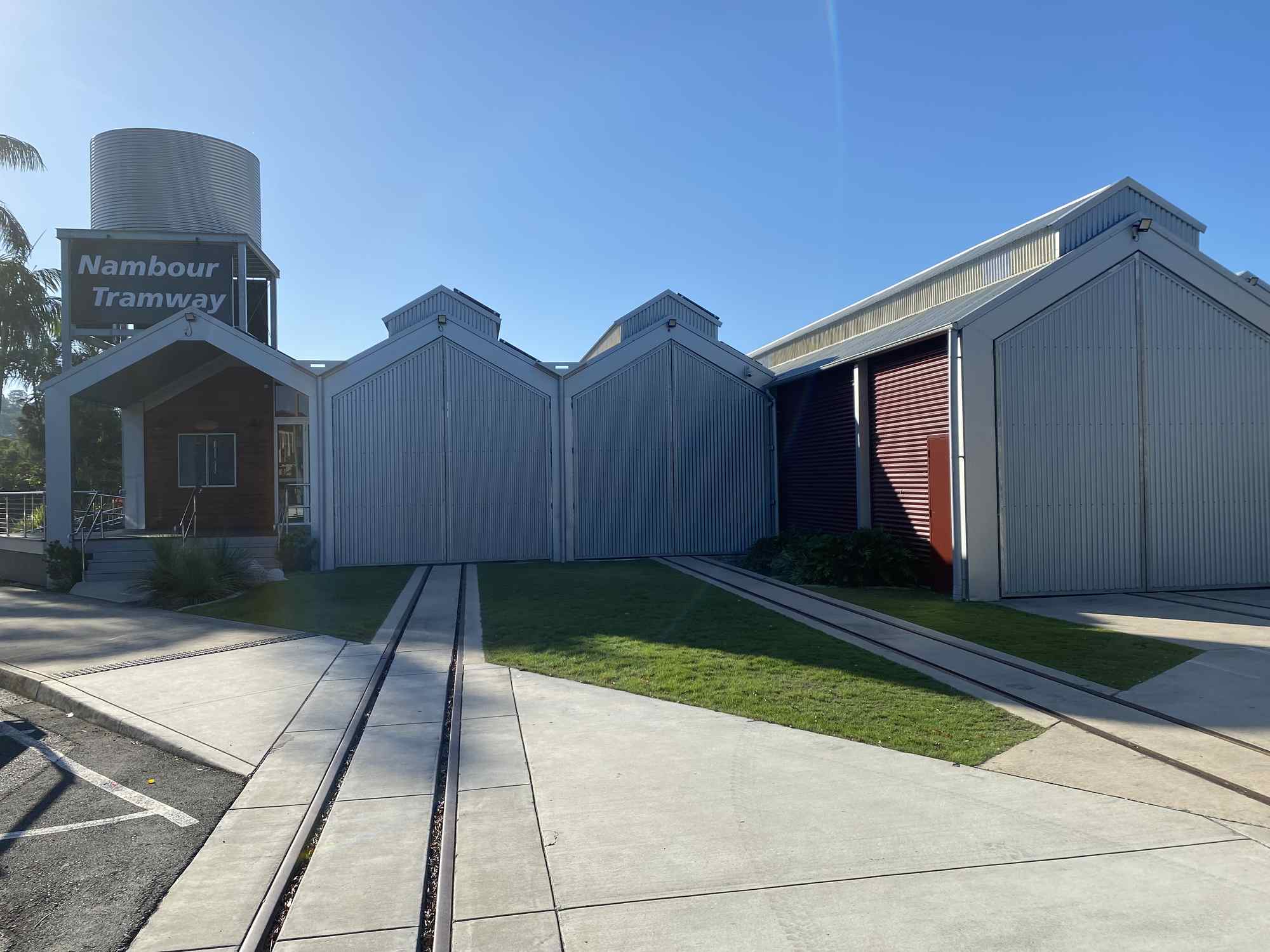
How the tram is being paid for
Building a terminus and tram is a costly exercise.
Mr Rogerson said NTC raised almost $160,000 from Tramfest, a monthly community event, over four years.
The construction of the tramway depot and its entry rail lines – an estimated $840,000 project – was primarily backed by a $500,000 Federal Government grant, awarded through the National Stronger Regions Fund.
Sunshine Coast Council, NTC fundraising and valuable donations helped plug the gap.
But it was the cost of the tram build that proved a sticking point, so Mr Rogerson went to well-known philanthropist Roy Thompson for help.
“I phoned him and said, ‘I hate to do this over the phone but I’m after some money’,” he said.
“Roy said I should see him ‘pretty smart’, so I met him in the afternoon and he gave us $1m towards the project.”
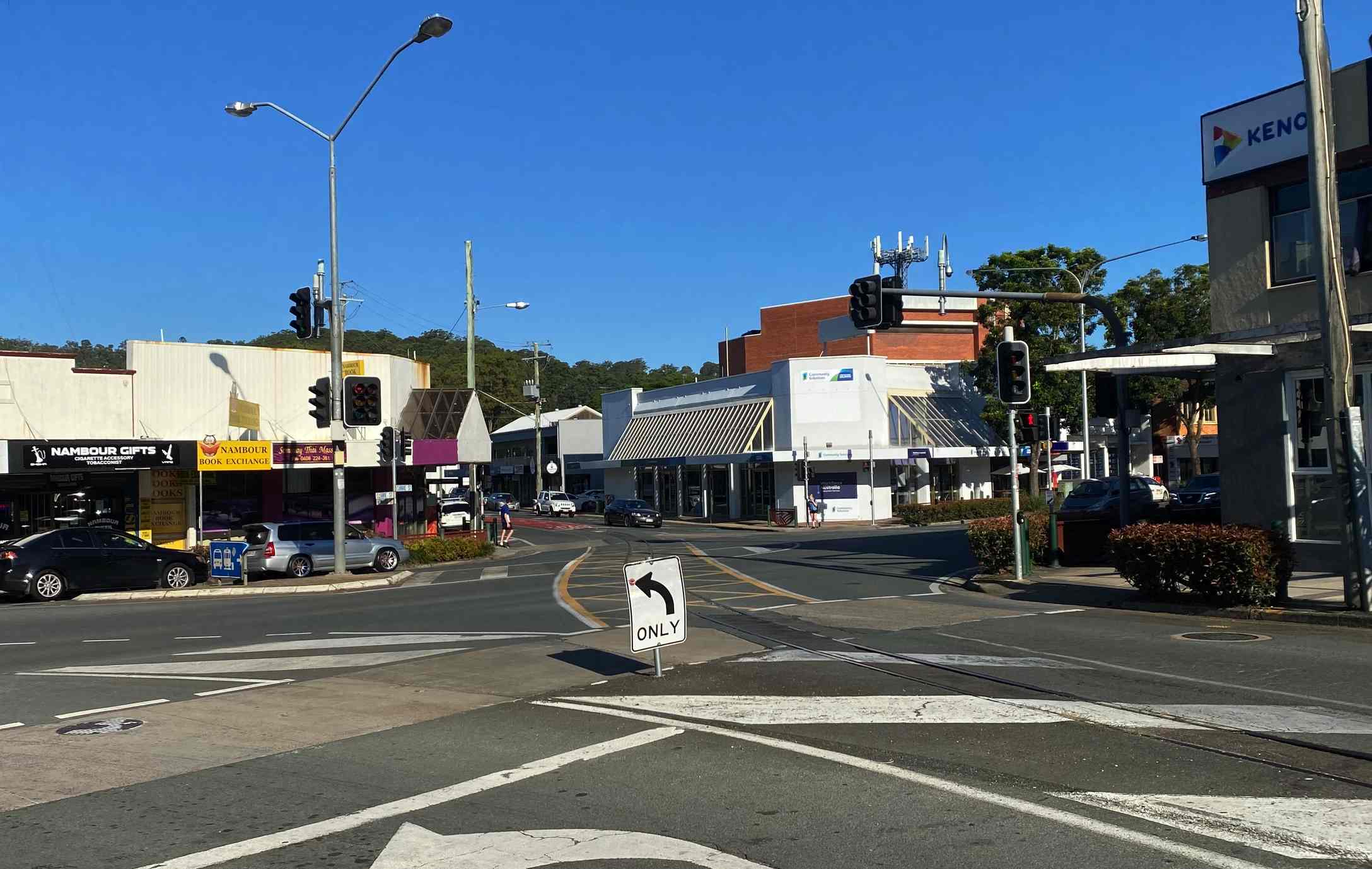
Mr Thompson put a dollar into the concrete at the terminus, to mark his crucial donation.
“His contribution will never be forgotten,” Mr Rogerson said.
“Without Roy and (his wife) Nola …”
Mr Rogerson also thanked philanthropist Rod Forrester and his family for a $200,000 contribution.
Some of the funds from the Thompsons and Forresters went towards the terminus, but the majority was for the tram construction, which will cost “certainly more than the $600,000 we first thought but under a million dollars”.
“The terminus, with solar panels, is absolutely magnificent – all the signalling is in, and the money is there for the tram,” Mr Rogerson said.
“We’re just fulfilling all the engineering guidelines with ONRSR.”
Mr Rogerson said the tram project had become much bigger than he anticipated.
“It has turned into a part of my life, even though I am retired now,” he said.
“It takes up almost every second of my day; planning and talking to Russell and the engineers.
“Kudos to the NTC board who are standing fast behind the project.”
Like stories about Sunshine Coast people doing great things? Help us deliver more by registering for our free daily news feed. All it requires is your name and email. See SUBSCRIBE at the top of this article.


